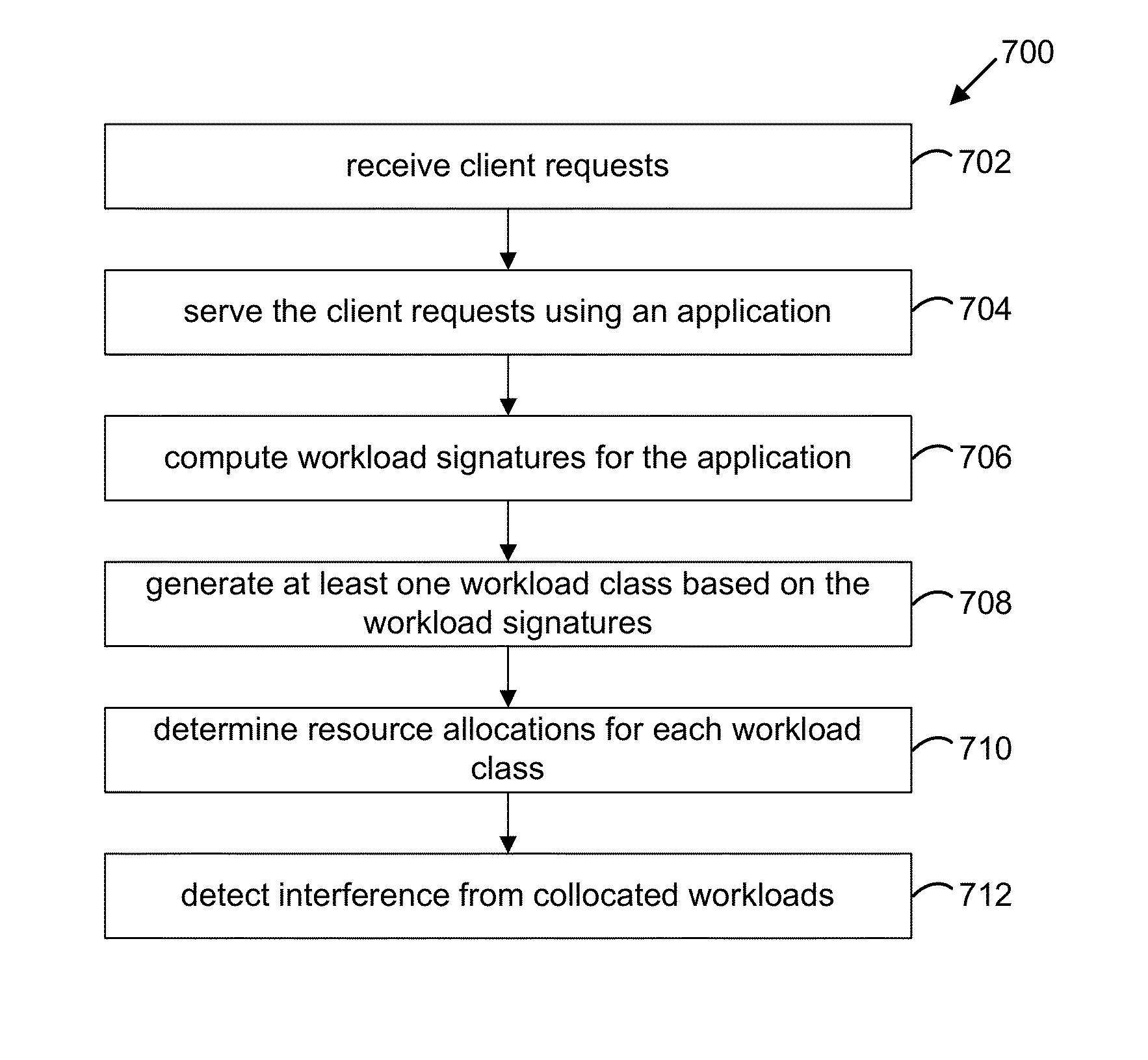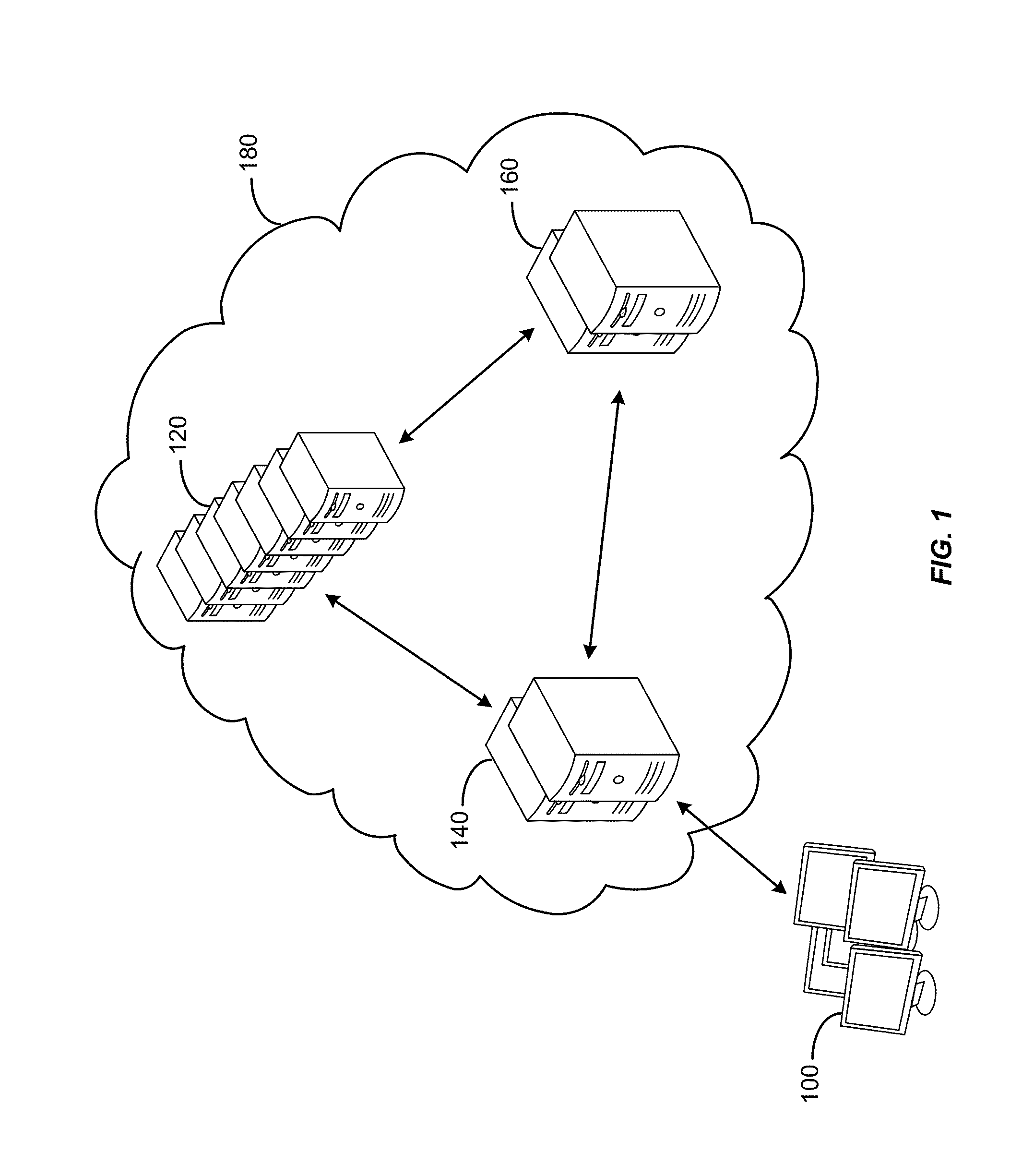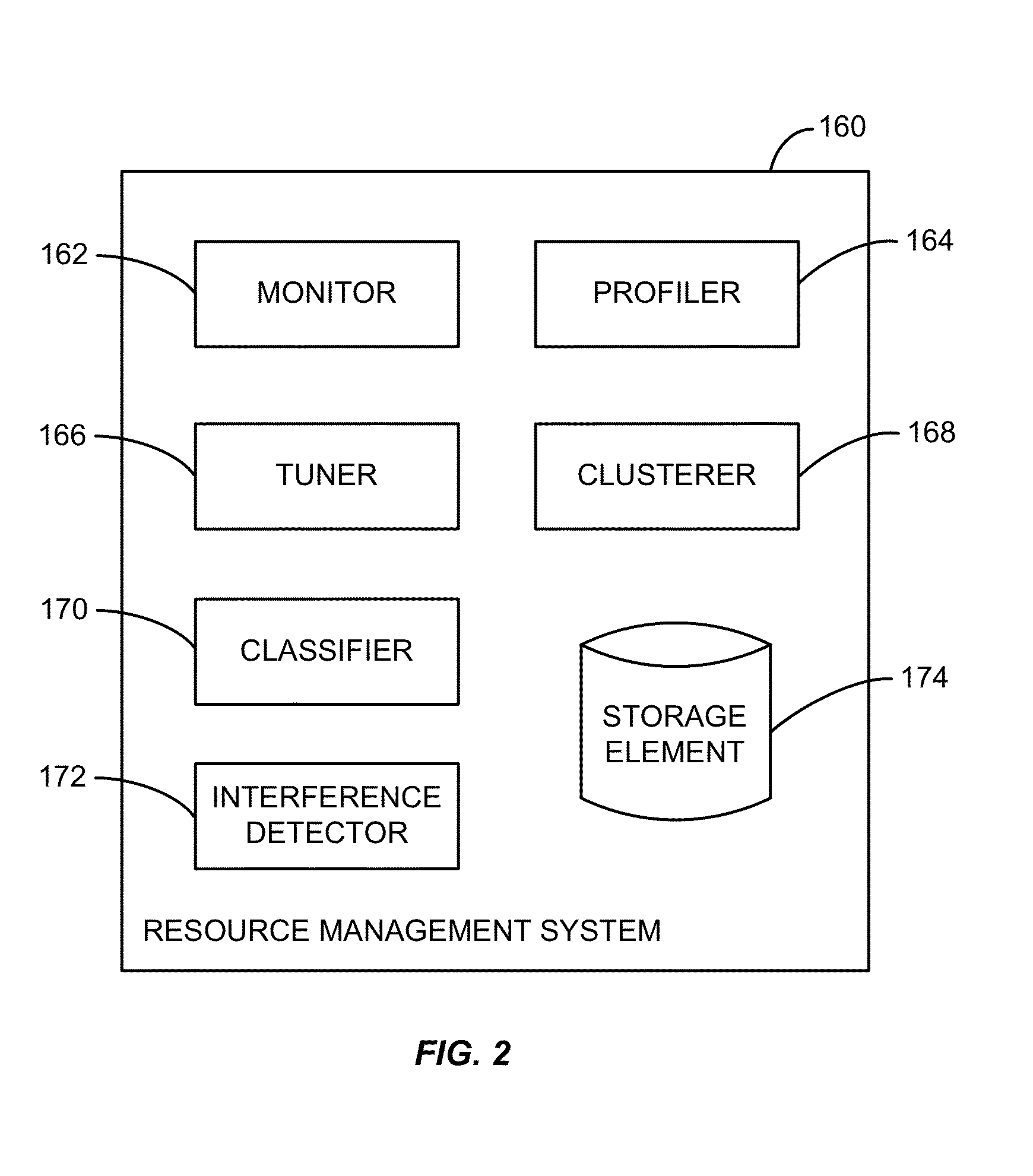Accelerating resource allocation in virtualized environments using workload classes and/or workload signatures
a virtualized environment and workload technology, applied in the direction of multi-programming arrangements, program control, instruments, etc., can solve the problems of provider waste of resources, difficult task of effective management of virtualized resources, and likely waste of money
- Summary
- Abstract
- Description
- Claims
- Application Information
AI Technical Summary
Benefits of technology
Problems solved by technology
Method used
Image
Examples
case study 2
3.2. Adapting to Workload Changes by Scaling Up
[0167]We next evaluated the resource management system's ability to reduce the service provisioning cost while varying the instance type (scaling up) from large to extra-large or vice versa, as dictated by the workload intensity. Toward this end, we monitored the SPECweb service with five virtual instances serving at the frontend, and the same number of them at the backend layer. We used the support benchmark, which is mostly I / O intensive and ready-only, to contrast with the Cassandra experiments which are CPU-, memory-, and write- intensive. Similar to the previous experiments, the resource management system uses the first day for the initial profiling / clustering, while the remaining days are used to evaluate its benefits.
[0168]FIG. 11(a) plots the provisioning cost, shown as the instance type used to accommodate the HotMail load over time. Note that the smaller instance was capable of accommodating the load most of the time. Only dur...
case study 3
3.3. Addressing Interference
[0170]Our next experiments demonstrate how the resource management system detects and mitigates the effects of interference. We mimic the existence of a co-located tenant for each virtual instance by injecting into each VM a microbenchmark that occupies a varying amount (either 10% or 20%) of the VM's CPU and memory over time. The microbenchmark iterates over its working set and performs multiplication while enforcing the set limit.
[0171]FIG. 13(a) contrasts the resource management system with an alternative in which its interference detection is disabled. Without interference detection, one can see that the service exhibits unacceptable performance most of the time. Recall that the SLO is 60 ms. In contrast, in the implementation used, the resource management system relied on its online feedback to quickly estimate the impact of interference and lookup the resource allocation that corresponded to the interference condition such that the SLO is met at all...
PUM
 Login to View More
Login to View More Abstract
Description
Claims
Application Information
 Login to View More
Login to View More - R&D
- Intellectual Property
- Life Sciences
- Materials
- Tech Scout
- Unparalleled Data Quality
- Higher Quality Content
- 60% Fewer Hallucinations
Browse by: Latest US Patents, China's latest patents, Technical Efficacy Thesaurus, Application Domain, Technology Topic, Popular Technical Reports.
© 2025 PatSnap. All rights reserved.Legal|Privacy policy|Modern Slavery Act Transparency Statement|Sitemap|About US| Contact US: help@patsnap.com



